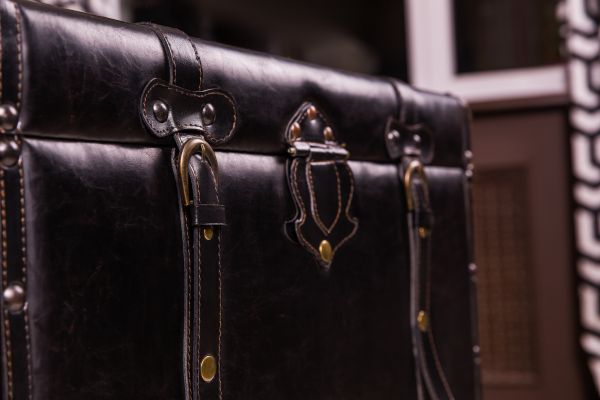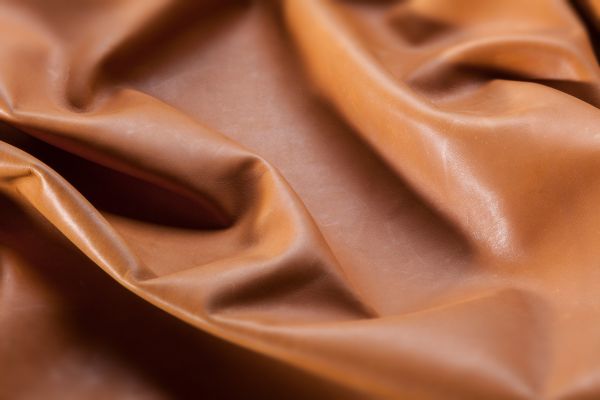When shopping for leather items like a jacket, couch, or bag, you’ve likely seen both faux leather and genuine leather options. But how do you know which one is best for you? Each type has its pros and cons, and the right choice depends on what’s most important to you – whether it’s durability, price, ethics, or style.

In this blog, we’ll compare faux leather vs real leather in a straightforward way, helping you make an informed decision.
What Is Faux Leather?
Faux leather, also called synthetic or vegan leather, is made to look and feel like genuine leather but without using any animal products. It’s made from plastic-based materials like polyurethane (PU) or polyvinyl chloride (PVC).

You’ll often see it in jackets, shoes, furniture, and even car seats. It’s popular because it’s affordable, easy to clean, and available in many colours and styles.
What Is Real Leather?
Genuine leather is made from animal hides, most commonly cowhide. These hides are treated through a process called tanning to make them durable and long-lasting.

Genuine leather is known for its natural texture, durability, and beautiful aging over time. It’s used in high-end clothing, bags, furniture, and more.
How Do Faux Leather and Real Leather Compare?
1. Durability
Faux Leather : Faux leather isn’t as tough as real leather. Over time, it can crack, peel, or fade, especially if it’s exposed to sunlight, heat, or heavy use. While it looks nice at first, it typically lasts around 3 to 5 years with regular use. Even if you take good care of it, faux leather won’t hold up as well in the long run.

Real Leather : Real leather is made to last. It’s naturally strong and, with proper care, can stay in great shape for decades. Unlike faux leather, it doesn’t crack or peel, and it actually gets better with time. As it ages, it develops a unique shine and softness (called a patina) that many people love. If durability and longevity matter to you, real leather is a solid investment.
2. Appearance and Feel
Faux Leather : Faux leather has a smooth, uniform look that can sometimes appear too perfect. While high-quality options mimic real leather, they often lack the natural texture and warmth of the real thing. Over time, faux leather may lose its appeal as it begins to crack or peel.

Real Leather : Real leather is unique, with natural imperfections like scars or grain patterns that add character. It feels soft and luxurious and ages beautifully, developing a rich patina over time that enhances its charm and individuality.
3. Cost
Faux Leather : Faux leather is much cheaper because it’s made from synthetic materials and doesn’t require the labour-intensive tanning process. This makes it an excellent option for budget-conscious people.

Genuine Leather : Real leather is more expensive because of the quality of the material and the work that goes into making it. However, it’s often considered an investment because of how long it lasts.
4. Maintenance
Faux Leather : Faux leather is super easy to care for. If it gets dirty, just wipe it down with a damp cloth and mild soap—no fancy treatments are needed.

Real Leather : Real leather requires more effort. You need to clean it with special leather products and condition it regularly to prevent drying out or cracking. It’s also more sensitive to water and heat.
5. Environmental and Ethical Concerns
Faux Leather : While faux leather is cruelty-free and doesn’t involve animals, it’s made from plastic, which isn’t biodegradable. Producing and disposing of faux leather can contribute to pollution.

Genuine Leather : Real leather is biodegradable, but there are ethical concerns since it involves animal hides. The tanning process can also involve harmful chemicals, which impact the environment.
Which One Should You Choose?
Go with faux leather : if you’re on a budget, prefer low-maintenance products, or want a cruelty-free alternative to genuine leather. It’s perfect for people who want the look of leather without the cost or ethical concerns.

Opt for genuine leather : if you’re looking for something durable, timeless, and luxurious. It’s more expensive upfront, but it’s a significant investment if you’re willing to put in the effort to care for it properly.
Both materials have pros and cons, so it really depends on what fits your lifestyle, values, and wallet.
Also read : Removing Oil-Based Perfume Stains from Leather Handbags | Bring Your Leather Handbag Back to Life
FAQs | Faux Leather vs Real Leather
Q.1 Is faux leather better than genuine leather?
It depends on what you’re looking for. Faux leather is cheaper, more eco-friendly, and easier to maintain, but genuine leather lasts longer and has a more natural, luxurious feel.
Q.2 What are the disadvantages of faux leather?
Faux leather can wear out quicker, crack over time, and doesn’t have the same durability as genuine leather. It’s also not as breathable and can look less authentic.
Q.3 How long does faux leather last?
Faux leather typically lasts 3-5 years, depending on the quality and how well it’s cared for. With heavy use, it may start to show wear sooner.
Q.4 Is faux leather expensive?
No, faux leather is usually much cheaper than genuine leather. It’s an affordable option for people who want the look of leather without the high cost.
Q.5 What is the best leather quality?
The best leather quality is usually full-grain leather. It’s the most durable and ages beautifully over time. Top-grain leather is also a good choice but is slightly less durable than full-grain.
Q.6 Is faux leather washable?
Yes, faux leather is generally washable. You can clean it with a damp cloth, and some types can even be wiped down with mild soap and water. Just check the care instructions to be sure.
Q.7 Does faux leather rip quickly?
Faux leather can rip or crack more easily than genuine leather, especially if it’s lower quality. With proper care, it can last a long time, but it’s more prone to damage over time.
Q.8 Are faux leather and rexine the same?
Yes, faux leather and rexine are essentially the same. Both are synthetic materials designed to look like genuine leather, though “rexine” is an older term often used for fabric-backed faux leather.
Q.9 How do you maintain faux leather?
To maintain faux leather, clean it regularly with a damp cloth to remove dirt and dust. Avoid harsh chemicals, and treat it with a faux leather cleaner or conditioner to keep it soft and prevent cracking.
Conclusion | Faux Leather vs Real Leather
When comparing faux leather vs genuine leather, there isn’t a one-size-fits-all answer—it really comes down to what matters most to you. If you’re looking for something affordable, easy to maintain, and animal-friendly, faux leather is a solid choice. However, if you’re ready to invest in a high-quality, long-lasting, and luxurious material, genuine leather is tough to beat. Both materials have their advantages and drawbacks.

Faux leather works well for those on a budget or who prioritize animal welfare, while genuine leather shines for its durability, classic style, and the way it gets better with age. No matter which option you pick, knowing the differences will help you make the best decision based on your budget, values, and lifestyle.
You may also like : What Kind of Leather Do Luxury Designer Bags Use?| The Leather Behind World-Class Designer Bags

